MikeB
Frequent Visitor

Joined: 20/08/2002 11:51:57
Posts: 3859
Location: Essex, UK
|
 Posted: Sat May 17, 2014 4:29 pm Post subject: GPS IIF-6 heads into orbit onto of a Delta IV rocket Posted: Sat May 17, 2014 4:29 pm Post subject: GPS IIF-6 heads into orbit onto of a Delta IV rocket |
 |
|
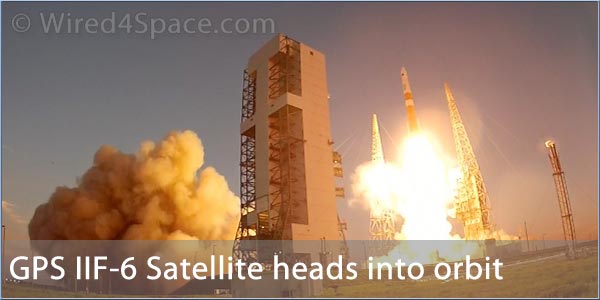
At sunset in Florida yesterday the latest in the Block IIF satellites was launched into orbit on top of a Delta IV rocket. With a beautiful red sky as the backdrop the rocket climbed into the sky assisted by twin solid rocket boosters.
The mission to place the GPS IIF-6 satellite into orbit took just over three hours with a lengthy unpowered cruise phase before a final orbit burn and the release of the satellite.
Continue to read the launch report from our Wired4Space.com associate with images and launch video...
The mission was delayed for a day due to a fierce storm that passed through the Florida Space Coast causing the launch to be scrubbed. The rocket was then safed and recycled for last nights slot which occurred at 8:03 EDT just minutes before sunset.
What a difference a day made. The skies had changed from 100% overcast and cloudy to 100% clear. Unusually as the countdown was progressing the weather officer predicted a 0% chance of any launch commit criteria being violated by the weather. This meant that only a technical issue could halt the launch.
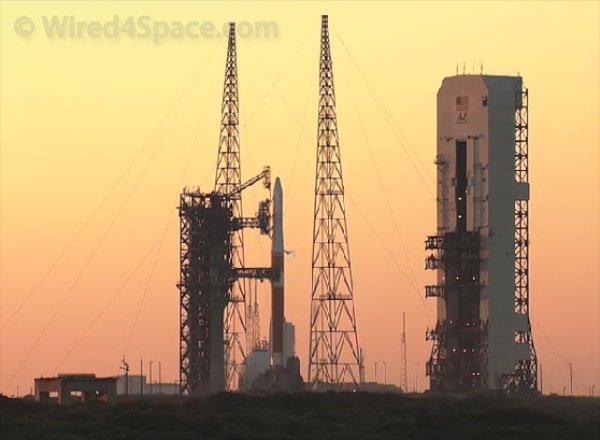
With a perfect countdown and no issues being worked the launch conductor polled the launch teams at L-10 minutes. With all stations reporting GO for Launch the launch conductor authorised the commencement of the Terminal Countdown to start at T-4 minutes or 7:59pm EDT.
The terminal countdown is an automated sequence of events which culminates in the ignition of the engines and liftoff. As the seconds ticked away the ground systems were disconnected and the rocket was ready for launch.
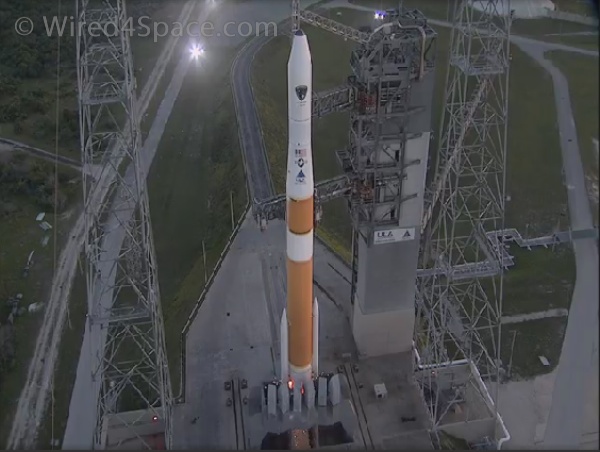
At T-15 seconds the ROFI sparklers started issuing a stream of sparks which light the propellants being ejected from the engine nozzles. The ROFIs also ignite surplus hydrogen which engulfs the lower section of the rocket in a fireball.
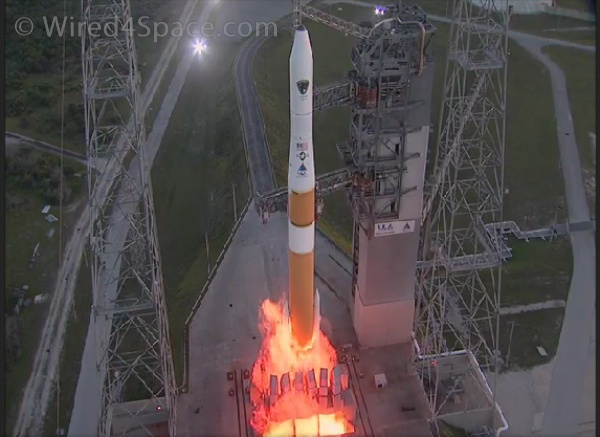
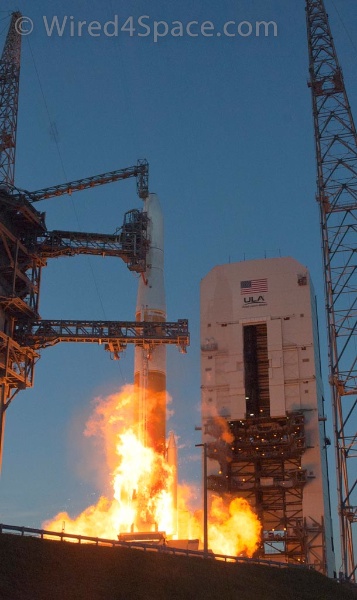
At T-5 seconds the Delta IV RS-68 engine was ignited and started to come up to full power. At T-0 the twin solid rocket boosters were lit, the hold downs released and with a roar of power the rocket blasted off into the evening skies.
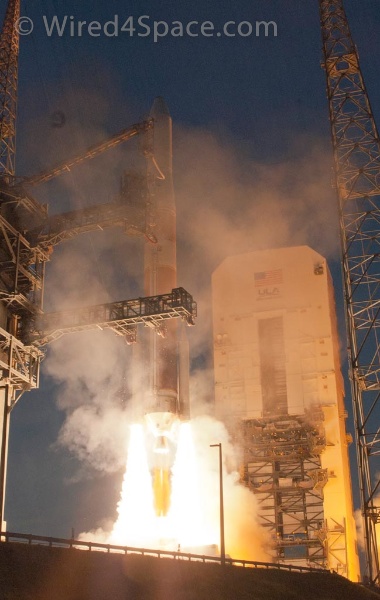
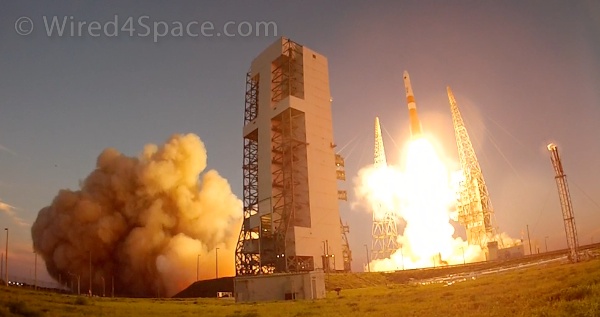
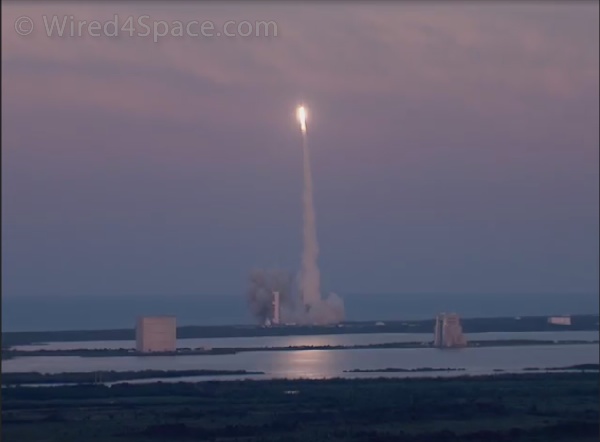
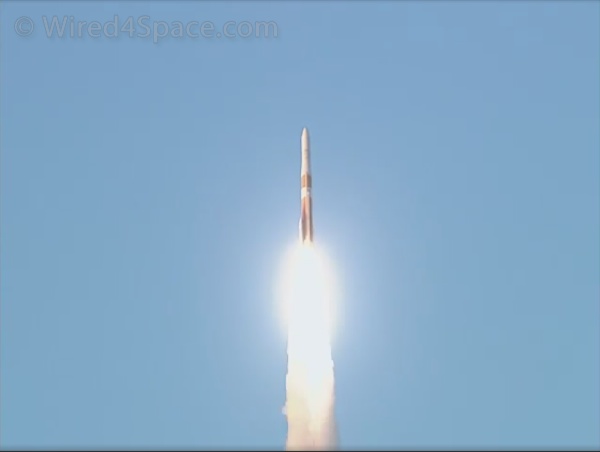
As the rocket cleared the launch complex it executed a pitch roll and yaw manoeuvre to orientate it into the correct flight path for orbital insertion. The solid rocket boosters powered the rocket for about 90 seconds prior to burning out, and jettisoning to fall back into the Atlantic Ocean. This left the main core of the Delta rocket lifting the satellite. By this time the rocket had already passed through the dense sections of the atmosphere and was accelerating rapidly.
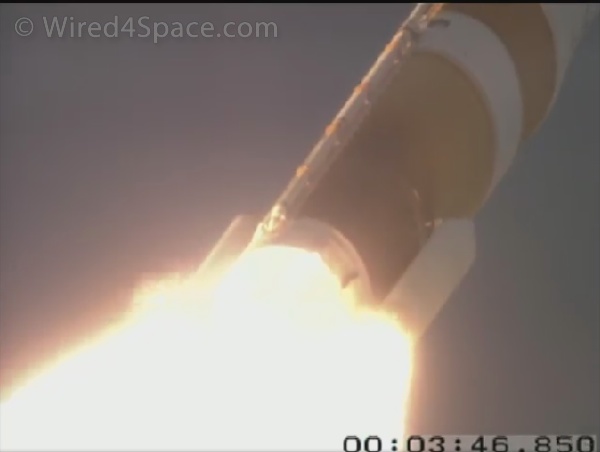
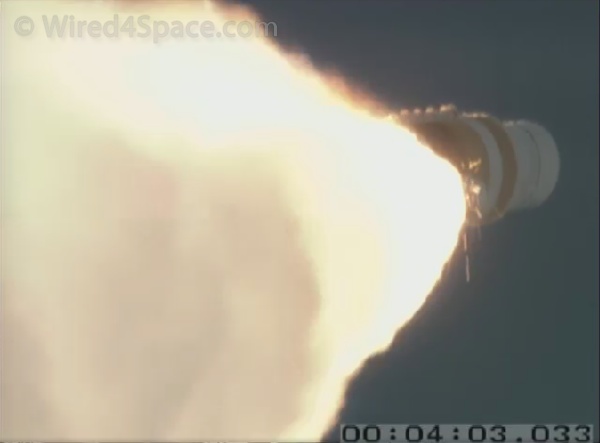
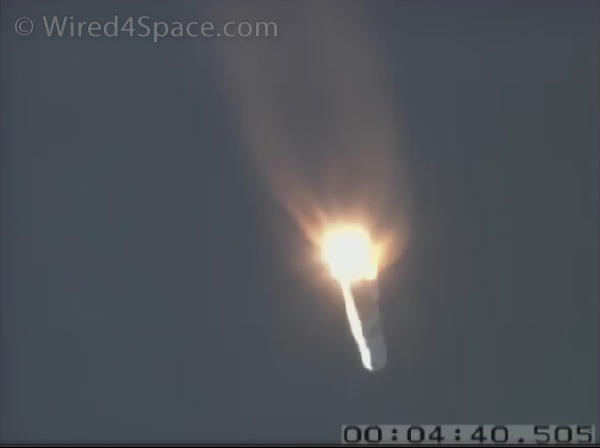
Four minutes after liftoff the first stage had completed its task of lifting the rocket towards the outer atmosphere and had separated and was tumbling back to the ocean. Now the Delta Cryogenic Second Stage was started for the first of two burns lifting the GPS Satellite into the target semi-synchronous circular orbit 11,000 miles above the surface of the planet. There was a lengthy coasting phase before the engine was relit for the final precise positioning of the GPS IIF-6 spacecraft before it was finally deployed.

The United Launch Alliance press release for the launch stated:
Cape Canaveral Air Force Station, Fla., (May 16, 2014) – A United Launch Alliance (ULA) Delta IV rocket successfully launched the sixth Global Positioning System (GPS) IIF-6 satellite for the U.S. Air Force at 8:03 p.m. EDT today from Space Launch Complex-37. This is ULA’s fifth launch in 2014, and the 82nd successful launch since the company was formed in December 2006.
“ULA is honored to work with this world-class U.S. government and contractor mission team, and we are proud to contribute to the GPS capabilities that were delivered to orbit today,” said Jim Sponnick, ULA vice president, Atlas and Delta Programs. “Congratulations to the entire team on tonight’s successful launch of the GPS IIF-6 satellite and the continued one-launch-at-a-time focus.”
This mission was launched aboard a Delta IV Medium-plus configuration Evolved Expendable Launch Vehicle (EELV) using a single ULA common booster core powered by an Aerojet Rocketdyne RS-68 main engine, along with two ATK GEM-60 solid rocket motors. The upper stage was powered by an Aerojet Rocketdyne RL10B-2 engine with the satellite encapsulated in a four-meter-diameter composite payload fairing.
ULA's next launch is the Atlas V NROL-33 mission for the National Reconnaissance Office scheduled for May 22 from Space Launch Complex-41 at Cape Canaveral Air Force Station, Fla.
GPS IIF-6 is the sixth in a series of next generation GPS satellites and will join a worldwide timing and navigation system utilizing 24 satellites in six different planes, with a minimum of four satellites per plane positioned in orbit approximately 11,000 miles above the Earth’s surface. The GPS IIF series provides improved accuracy and enhanced performance for GPS users.
The EELV program was established by the United States Air Force to provide assured access to space for Department of Defense and other government payloads. The commercially developed EELV program supports the full range of government mission requirements, while delivering on schedule and providing significant cost savings over the heritage launch systems.
With more than a century of combined heritage, United Launch Alliance is the nation’s most experienced and reliable launch service provider. ULA has successfully delivered more than 80 satellites to orbit that provide critical capabilities for troops in the field, aid meteorologists in tracking severe weather, enable personal device-based GPS navigation and unlock the mysteries of our solar system. Reliable launch, real-world benefits. | | |  |
_________________
Mike Barrett |
|